Find more information in the General Comments section of the assessment
Find more information in the Rating Validity tab of the assessment
- See More
- See More
- See More
- See More
- Good
- Adequate
- Marginal
- Weak
- Poor
 Passenger
Passenger
 Driver
Driver
 Rear Passenger
Rear Passenger
 Driver
Driver
 Car
Car
 Pole
Pole
 Rear Seat
Rear Seat
 Front Seat
Front Seat
- Good
- Adequate
- Marginal
- Weak
- Poor


Passenger
outboard
center
Fitted to the vehicle as standard
Not fitted to the test vehicle but available as option
Not Available
-
Infants up to 13 kg
-
Infants and toddlers up to 18 kg
-
Toddlers from 9 to 18 kg
-
Toddlers over 18 kg
Easy
Difficult
Safety critical
Not allowed
| Seat Position | ||||
|---|---|---|---|---|
| Front | 2nd row | |||
| Passenger | Left | center | Right | |
| Maxi Cosi Cabriofix (Belt) | ||||
| Britax Römer King Plus (Belt) | ||||
| Britax Römer Duo Plus (ISOFIX) | ||||
| Britax Römer KidFix (Belt) | ||||
| Maxi Cosi Cabriofix & EasyFix (Belt) | ||||
| Maxi Cosi Cabriofix & EasyFix (ISOFIX) | ||||
| BeSafe iZi Kid X3 ISOfix (ISOFIX) | ||||
| Maxi Cosi Pearl & Familyfix (ISOFIX) | ||||
| Britax Römer KidFix (ISOFIX) | ||||
Easy
Difficult
Safety critical
Not allowed
Both child dummies were sat in rearward-facing restraints in the offset frontal test. The car scored maximum points for its protection of both the 1½ year and 3 year dummies in the frontal offset and side barrier tests. In the side impact, both dummies were properly contained within the protective shells of their restraints, minimising the risk of head contact with parts of the vehicle interior. The front passenger airbag can be disabled to allow a rearward-facing restraint to be used in that seating position. Clear information is provided to the driver regarding the status of the airbag and the system was rewarded. All of the restraint types for which the X1/X2 is designed could be correctly installed and accommodated in the car.
- Good
- Adequate
- Marginal
- Weak
- Poor

Head Impact 19.4 Pts
Pelvis Impact 1.3 Pts
Leg Impact 6.0 Pts
Both the X1 and the X2 have a 'pop-up' bonnet. Sensors in the bumper detect when a pedestrian has been struck and actuators raise the bonnet to provide greater clearance between the surface and the hard structures in the engine compartment. BMW showed that the system worked robustly for a variety of pedestrian statures and across a range of speeds. Accordingly, tests were done with the bonnet in the deployed (raised) position. Results on the bonnet surface were almost entirely good, with some areas of adequate protection to a pedestrian's head. Some poor results were recorded only on the front edge of the windscreen and on the stiff windscreen pillars. Additional tests on the X2 gave results that were better than those of the X1. The bumper scored maximum points for the protection it offered to pedestrians' legs. Protection of the pelvic region was predominantly poor.
- Good
- Adequate
- Marginal
- Weak
- Poor
| System Name | ISA |
| Speed Limit Information Function | Camera based |
| Warning Function | System advised |
| Speed Limitation Function | System advised |
| System Name | DSC (Dynamic Stability Control) | |
| Performance | ||
| Vehicle Yaw Rate @ COS + 1.00 s | 1.5% | meets ECE requirements |
| Vehicle Yaw Rate @ COS + 1.75 s | 1.5% | meets ECE requirements |
| Lateral Displacement @ BOS + 1.07 s | 3.3 m | meets ECE requirements |
| Applies To | All seats | ||
| Warning | Driver Seat | Front Passenger(s) | Rear Passenger(s) |
| Visual | |||
| Audible | |||
|
|||
| System Name | Approach Warning with City Brake Activation | |||
| Type | Forward Collision Warning with Auto-Brake | |||
| Operational From | 5 km/h | |||
| Additional Information | Default On | |||
| Performance | | ||||
| Autobrake Function Only | Driver reacts to warning | |||
| Operational Speed | 5-80 km/h | 5-250 km/h | ||
| Approaching a stationary car | See AEB City | Crash avoided up to 70km/h.Crash speed reduced up to 80km/h. | ||
| Approaching a slower moving car | Crash avoided up to 40km/h.Crash speed reduced up to 70km/h. | Crash avoided up to 80km/h. | ||
| Following a car at short distance | ||||
| Car in front brakes gently | Mitigation | Avoidance | ||
| Car in front brakes harshly | Mitigation | Mitigation | ||
| Following a car at long distance | ||||
| Car in front brakes gently | Mitigation | Avoidance | ||
| Car in front brakes harshly | Mitigation | Avoidance | ||
Electronic stability control is standard equipment on the X1 and X2, together with a seatbelt reminder system that protects the front and rear seats. Autonomous emergency braking is also standard and demonstrated adequate performance in Euro NCAP's tests. A standard-fit, camera-based speed limiter advises the driver of the limit and allows the driver to set the appropriate maximum speed for the vehicle.
- Specifications
- Safety Equipment
- Videos
- Rating Validity
Specifications
Tested Model BMW X1 sDrive18d, LHD
Body Type - 5 door SUV
Year Of Publication 2015
Kerb Weight 1320kg
VIN From Which Rating Applies - all X1s and X2s
Class Small SUV
Safety Equipment
Note: Other equipment may be available on the vehicle but was not considered in the test year.
Fitted to the vehicle as standard
Fitted to the vehicle as option
Not fitted to the test vehicle but available as option
Not Available
Not Applicable
Videos


Rating Validity







Find more information in the General Comments section of the assessment
The BMW X2 shares a platform and almost all of its structure with the X1. As the X2 has a slightly different side frame and a new bumper front, additional tests have been performed, notably in side, pole and leg impact. A review by Euro NCAP of the results of these tests and of further data provided by BMW reveals that the 2015 rating of the X1 can also be applied to the X2.
 Share
Share
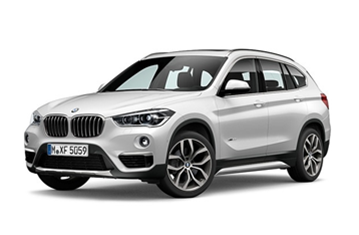
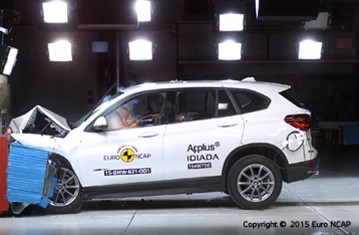

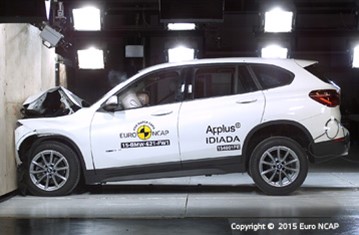
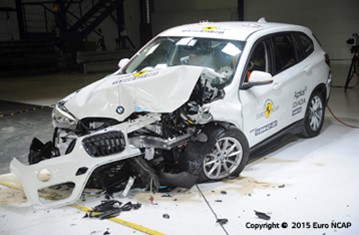

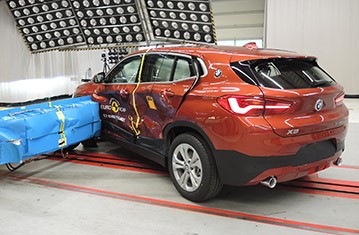
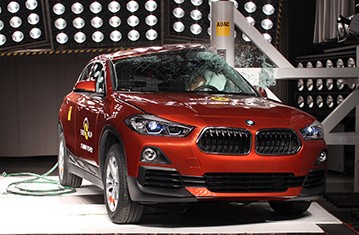
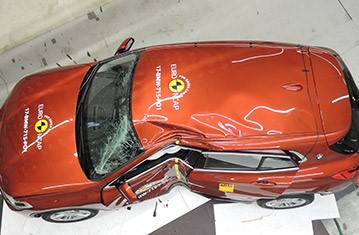


The passenger compartment remained stable in the frontal offset test. Dummy readings indicated good protection of the knees and femurs of both the driver and passenger dummy. BMW showed that a similar level of protection would be provided to occupants of different sizes and to those sat in different positions. Data reviewed by Euro NCAP showed marginally better performance of the X2 than that of the X1 in this test. In the full-width rigid barrier impact, protection of all body regions was good for all critical body regions of the driver and rear passenger, with the exception of the chest, protection of which was adequate. Data for the X2 showed slightly poorer chest protection than that of the X1 but, overall performance was very similar. The X1 scored maximum points in both the side barrier test and in the more severe side pole test, with good protection of all critical parts of the body. When the same tests were repeated on the X2, good protection was again seen for all critical body areas. The front seats and head restraints demonstrated good protection against whiplash injury in the event of a rear-end impact while a geometric assessment of the rear seats indicated marginal whiplash protection for the occupants of those seats. The standard-fit autonomous emergency braking system showed good performance in Euro NCAP's tests of its performance at the low speeds at which many whiplash injuries are caused.